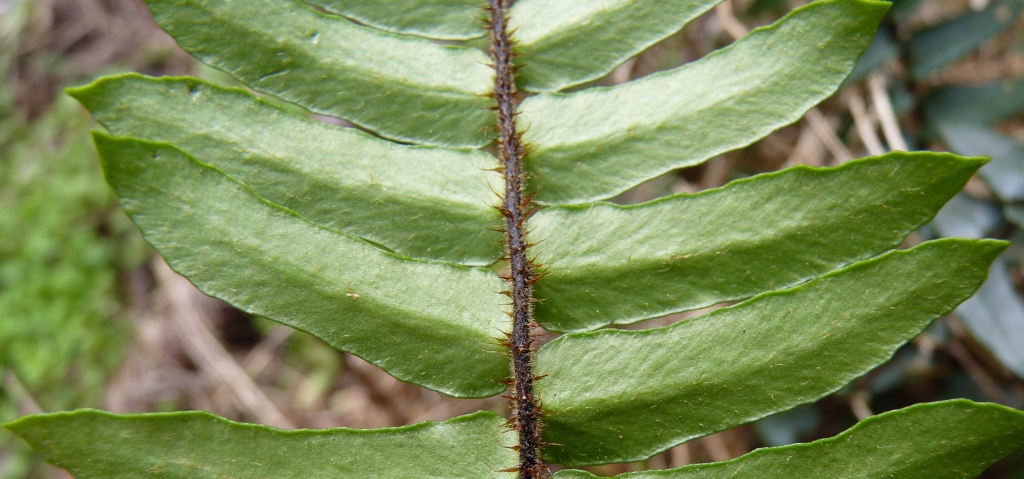Pellaea falcata
(R.Br.) Fée Sickle FernRhizome long-creeping; scales narrowly ovate, c. 1.5–2 mm long, dark brown to black with paler borders. Fronds erect, 37–105 cm long. Stipes 10–30 cm long, densely clustered, 5–15 mm apart, stiff, persistent, dark brown; stipe and rachis with dense covering of spreading brown scales and hairs; scales narrowly triangular, 3–4 mm long. Lamina 1-pinnate, narrow ovate, with 27–75 pinnae, coriaceous, ±glabrous aside from a few scales on the mid-vein, dark green above, paler beneath. Pinnae sessile or shortly stalked (stalk < 2 mm long), oblong to linear-oblong or ovate, often falcate, 22–46 mm long, 5–12 mm wide; apex obtuse or acute; base truncate to cordate; margins entire, often undulate; veins largely obscure except mid-vein. Sori continuous in band 1–2 mm wide along margins, reaching almost to apex and base, appearing raised on the upper surface; reflexed margin covering young sori.
GleP, VVP, VRiv, GipP, OtP, WaP, Gold, CVU, DunT, NIS, EGL, EGU, WPro, HSF, HNF, OtR, Strz, MonT, HFE, VAlp. Also Qld, NSW, Tas. (including Bass Strait islands). New Zealand, Malaysia, India. Occurs in a wide variety of habitats, from alluvial flats in forests, to scrub and open woodland, and among rocks to damp, cleared, rocky slopes. Dull brown rachises persisting among the new fronds are particularly noticeable on open sites.
This is a variable species, at its extremes resembles P. nana and P. calidirupium. See notes under those species.
Entwisle, T.J. (1994). Ferns and allied plants (Psilophyta, Lycopodiophyta, Polypodiophyta). In: Walsh, N.G.; Entwisle, T.J., Flora of Victoria Vol. 2, Ferns and Allied Plants, Conifers and Monocotyledons, pp. 13–111. Inkata Press, Melbourne.
 Spinning
Spinning


